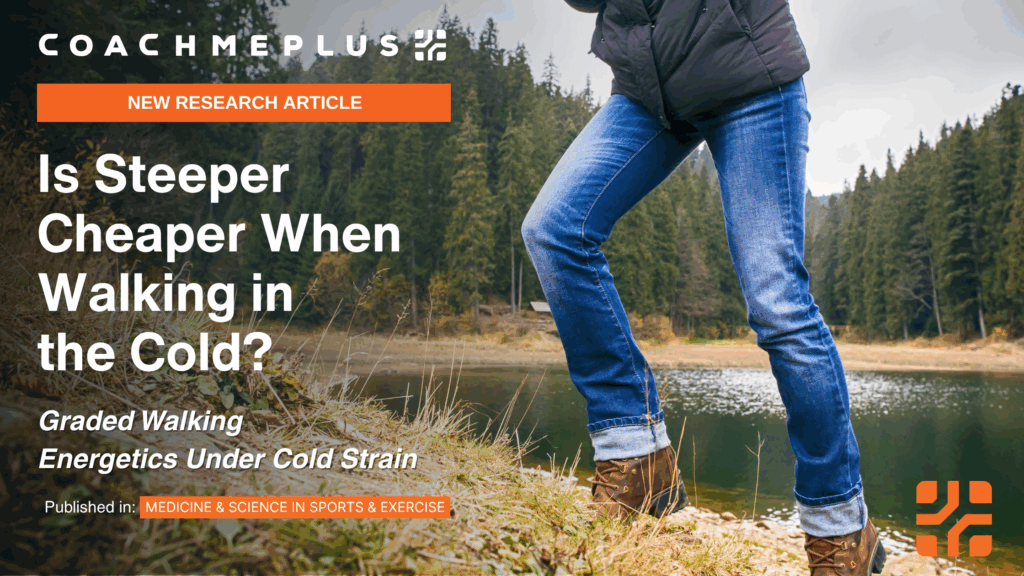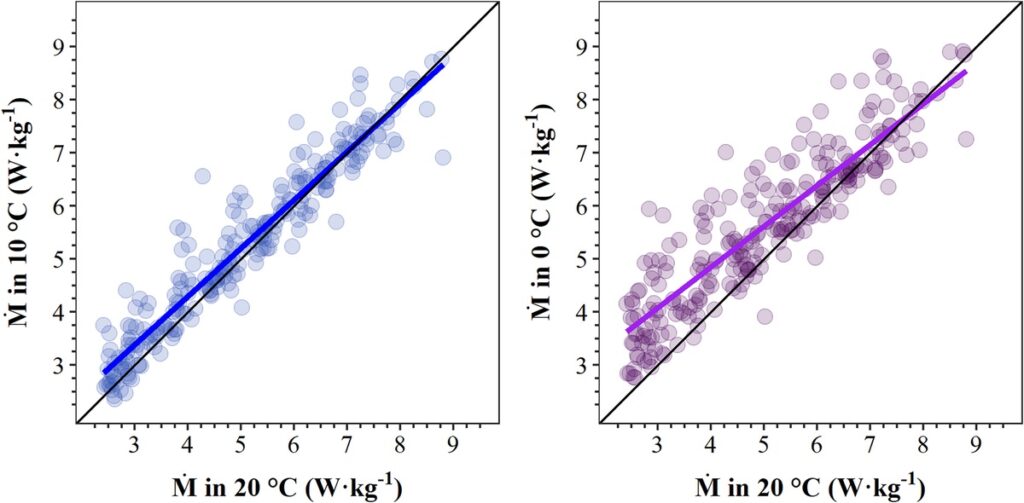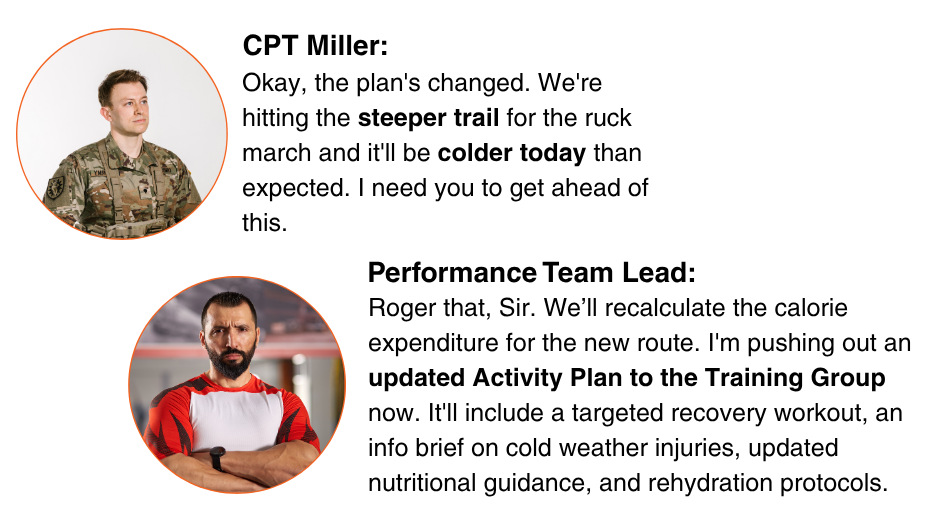
When you’re planning a route for a training session, hike, or military operation, does a shorter, steeper path really burn fewer calories than a longer, flatter one? That’s the question Dr. David Looney, Human Performance Data Scientist at CoachMePlus, set out to answer, especially when cold temperatures enter the equation.
We know from prior research that for mountain racers, “steeper is cheaper” – meaning climbing a steeper incline at a slower pace can be more metabolically efficient than a shallower but longer slope at a faster speed if you reach the summit at the same time. But does this still hold true for the rest of us – coaches, soldiers, tactical athletes – especially when cold stress enters the mix?
Calorie Expenditure, One Degree at a Time
In a new study published in Medicine & Science in Sports & Exercise, Dr. Looney and his team tested 14 military-aged individuals walking on treadmills with varying speeds and inclines in three environmental conditions: 20°C (room temp), 10°C, and 0°C. Participants wore standard U.S. Army physical training uniforms and completed 20-minute walking trials under each condition. The study used indirect calorimetry to understand how cold strain influences calorie expenditure when walking at different combinations of speeds and inclines that would reach a summit in the same time.
The findings? At all tested temperatures – even at 0°C – participants used less energy when walking steeper inclines more slowly, compared to covering the same elevation gain on more gradual slopes at faster speeds. The “steeper is cheaper” rule still holds.

The Cold Factor – How Cold Stress Influences Energy Demands
One new layer of insight this study revealed is how cold stress influences energy demands, especially during slower walking. In cold environments, the body ramps up thermogenic responses – like shivering and non-shivering heat production – to maintain core temperature. This drives up metabolic rate, particularly during lower-intensity activities that don’t generate enough internal heat.
Interestingly, Dr. Looney’s study found that while the body’s core temperature remained stable, skin temperature dropped significantly at colder ambient conditions—confirming that cold strain was enough to increase risk of frostbite but not hypothermia. These findings help coaches and tactical planners understand how much more energy an athlete or soldier might expend simply due to environmental exposure.
Validating the Load Carriage Decision Aid Metabolic Model
The study also tested the U.S. Army’s Load Carriage Decision Aid (LCDA) metabolic model to see how well it predicted calorie expenditure in colder conditions. It performed accurately at 20°C and 10°C, but underestimated the caloric cost at 0°C, especially in leaner individuals with higher surface area-to-bodyweight ratios. This insight is critical for refining predictive tools used in mission planning or performance monitoring.
What This Means for Human Performance Professionals
For strength coaches, tactical leaders, and performance scientists, this research offers direct takeaways:
- Route planning matters: If you want to conserve energy, whether in a training plan or field operation, opt for shorter, steeper routes when feasible.
- Cold stress increases cost: Walking in the cold takes more out of the body than you’d expect. Monitor intensity and exposure duration accordingly.
- Prediction tools need finetuning: Models like LCDA are valuable, need to be adapted for colder conditions and athlete-specific factors like body composition.

Dr. Looney’s work reflects the type of data-driven, applied research that CoachMePlus is proud to be part of. It’s another example of how we’re partnering to push the edge of human performance science, so coaches and teams can perform smarter, not just harder.

Recent Comments